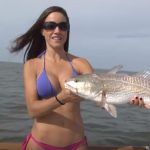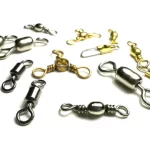Snap jigging is often associated with targeting fish in current breaks using light bucktails, a technique that has proven effective in many regions. However, in areas like the Finger Lakes and the Great Lakes, snap jigging plays a crucial role in catching suspended walleye. National Walleye Tour Pro Craig Sleeman has perfected this method over the years, using it to help clients land fish and secure tournament wins.
Key Locations for Suspended Walleye
The most productive areas for snap jigging walleye are transition zones where fish stage between spawning and feeding grounds. These locations serve as resting areas, especially during midday before walleye begin actively feeding.
Sleeman often targets wind-driven spots near spawning flats or weed beds. Wind-generated currents provide ideal conditions for walleye to gather. In deeper water, sand flats adjacent to underwater points are excellent locations, particularly during the summer and winter when walleye move to deeper zones.

Selecting the Right Gear
Rods
Choosing the right rod depends on whether the fish are positioned beneath the boat or further away. For casting, a longer rod improves the hookup ratio when bites are short and finicky. Sleeman recommends a Douglas Rods LRS 725XF spinning rod, which is specifically designed for snap jigging. When fish are directly below, a shorter Douglas Rods LRS 683XF spinning rod provides better control.
Reels
A large-arbored spinning reel is essential for quickly retrieving line and handling deep-water presentations. A 3000-sized reel, such as the Daiwa Fuego spinning reel, offers a fast gear ratio, deep spool, and strong drag system—perfect for battling walleye. Since some productive flats range from 70 to 90 feet deep, having a reel that holds ample line is crucial.
Line
Braided line in the 10- to 15-pound range provides the necessary sensitivity and strength for snap jigging. Sleeman prefers Suffix 832 braid, while other anglers may opt for Cortland Masterbraid. The choice between 4-strand and 8-strand braid is mostly a matter of preference, as performance differences are minimal.
A fluorocarbon leader is recommended when fishing around rocks, weeds, or zebra mussel-infested areas. A 15- to 20-pound Seaguar Blue Label fluorocarbon leader offers excellent abrasion resistance, reducing the risk of break-offs.
Best Baits for Snap Jigging
A variety of lures can be effective, but some consistently produce better results. The Rapala Jigging Rap, originally designed for ice fishing, delivers an erratic darting action that triggers reaction strikes when used vertically. For casting, baits with a fluttering motion are ideal. Bucktail jigs, such as the Spro Bucktail Jig paired with a straight-tail soft plastic, perform well in this scenario. Another reliable choice is a Z-Man Scented Jerk Shad rigged on a Northland Smeltinator jighead, which entices inactive walleye into striking.
Increasing Hookup Ratios
Since snap jigging relies heavily on reaction strikes, adding a stinger hook can significantly improve hookup rates. Sleeman attaches a larger VMC treble hook to the bottom of his jigging raps, increasing the chances of securing fish that strike short. On bucktail jigs and soft plastics, a Torpedo stinger treble or a single octopus hook enhances the likelihood of a solid hookset.
“When walleye are striking out of reaction rather than feeding, they often short-strike the bait,” Sleeman explains. “A stinger hook increases the odds of getting a solid hookup and landing more fish.”
Locating and Hooking Suspended Walleye
Finding fish is often the most challenging part of the process. Side-imaging sonar is an invaluable tool for locating suspended walleye. Slowly idling over sand or weed flats allows anglers to spot schools of fish as shadowy marks on the sonar. Marking these locations with waypoints enables precise boat positioning using a trolling motor.
Forward-facing sonar further improves success by showing the direction fish are moving and the location of the bait in real time. Depending on wind and current conditions, anglers can either cast or drop their baits vertically.
Once the bait reaches the bottom, it should be reeled up to the depth where fish are holding. From there, snap the bait upward on a slack line before letting it fall. This movement should be repeated as the lure is retrieved. Strikes typically occur either on the drop or the snap-up motion.
Snap jigging for suspended walleye is one of the most effective techniques for enticing fish during tough conditions. As Sleeman advises, “When the fish are fickle, snap jig! You won’t regret it.”
Image/Source: Wired2Fish





